Spring is a perfect time to have an outdoor picnic with your family. But it can be ruined by the wasps hovering around you. So, are you wondering how to get rid of wasps in a tree?
Traps are the most common and effective way to remove wasps from the yard. Hang the trap on the tree. Another easy way is spraying a pesticide directly on the wasp nest. If you don’t want to buy pesticides, you can make them at home.
Fortunately, it is easier to handle wasp nests in the yard than in the home. Stick around till the end so you can enjoy your outdoors once again.
Do Wasps Live In Trees?
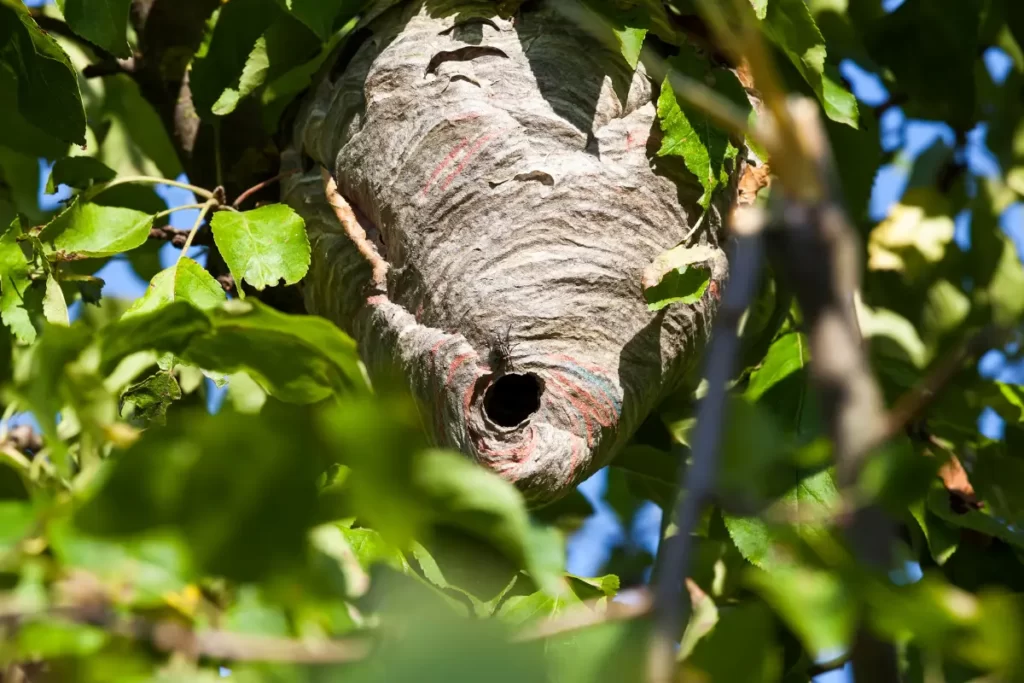
Yes. Wasps do live in a tree. Although wasps nest in trees are a common occurrence when they are in your yard, they can be a bothersome annoyance. Wasps frequently make nests in areas like hollow trunks or underground roots.
The more traditional wasp nests are hanging from the limbs of trees. They often make their nest high above in trees, which is not a concern to the general public. While wasps are used to being around people, they might sting you if they feel threatened. Wasps nesting three meters above the ground are not dangerous.
However, anything below this height is possibly threatening. Attacking them directly without any plan is the worst mistake you can make.
What Attracts Wasp Infestation In A Tree?
Trees are lovely to have inside your home, giving it a fresh look. However, they can attract numerous insects and bees, including wasps.
Colorful hues and flowers alone can attract wasps. But, if there are no plants, wasps search for fruit or garbage in the surrounding area as they enjoy sweet drinks. Below are a few things that attract buzzing pests to the trees.
Fruit Trees
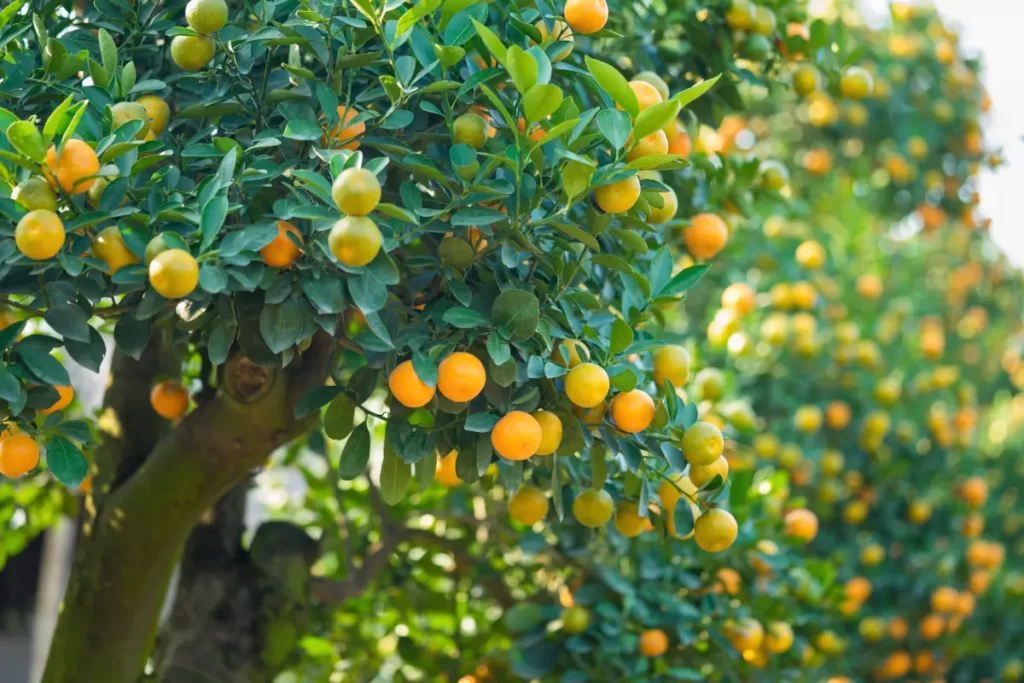
Orchards and fruit trees are great for bringing fresh organic produce to your community. However, fruit-bearing trees can attract wasps into your yard. However, the majority of wasp species are insect-eating carnivores. But they all need water and sugar in the diet to maintain a high energy level.
Shelter
Wasps are flying organisms. And many of them like to live above the ground. Therefore, they use trees by attaching their nest to the branches or hollow trunks. By hanging above the ground, they can easily dodge their predators. Trees also provide them with ample wood to build their nest.
Meat
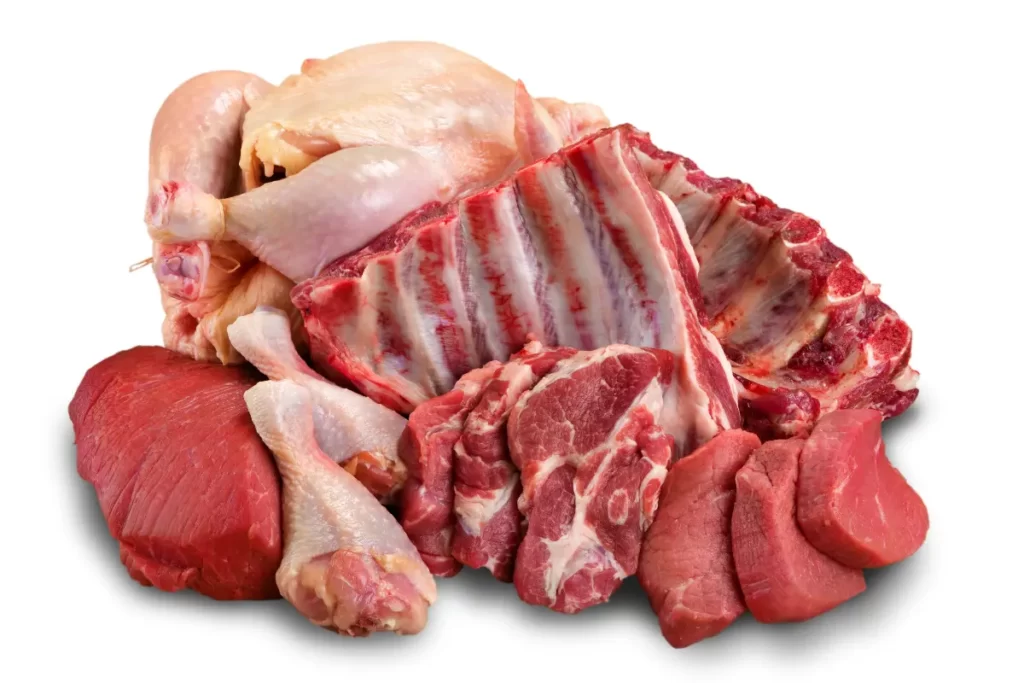
During spring and early summer, wasps feed on meat. Protein is in many other food sources, including meat. Most wasp species larvae have mouth parts to eat solids, unlike the adults. Most adult wasps can only consume liquid food.
Therefore, older wasps in colonies hunt insects for the growing larvae. Aphids, commonly found on trees, have sweet and sticky honeydew secretions which attract bees. Wasps attack and kill them and take them back to their nest. Similarly, wasps also see scale insects as their ongoing food source.
Bright Flowers

Wasps mainly feed on the nectar from the flowering plants. When they feed on flowers of a specific color, they link that color with a food source. Thus, they are attracted to the plants of that color. Wasps are commonly attracted to flowers and fruits of color green, pink, blue, yellow, ultraviolet, and many others.
Marigolds, Geraniums, Spearmint, Solidago, Beebalms, Stonecrop, and Sweet funnels attract wasps. Their bright colors and sweet vectors can have these buzzing bees hang around for a while. Another reason why overripe fruit and juices are attractive to wasps is because they mimic the color of many flowers while still providing them with sugar.
Types Of Trees Having Wasps
Wasps do not have a specific type of tree in which they live. Different trees attract different wasp species. It is not necessary that one tree type will not have more than one wasp species living on it.
There are several types of wasp species, and each has its own preference. However, almost all species look for food, water, and shelter before they settle in any place. Unfortunately, trees provide all of these to the buzzing pests. Few of the tree types that attract wasps are given below with details.
Oak Trees
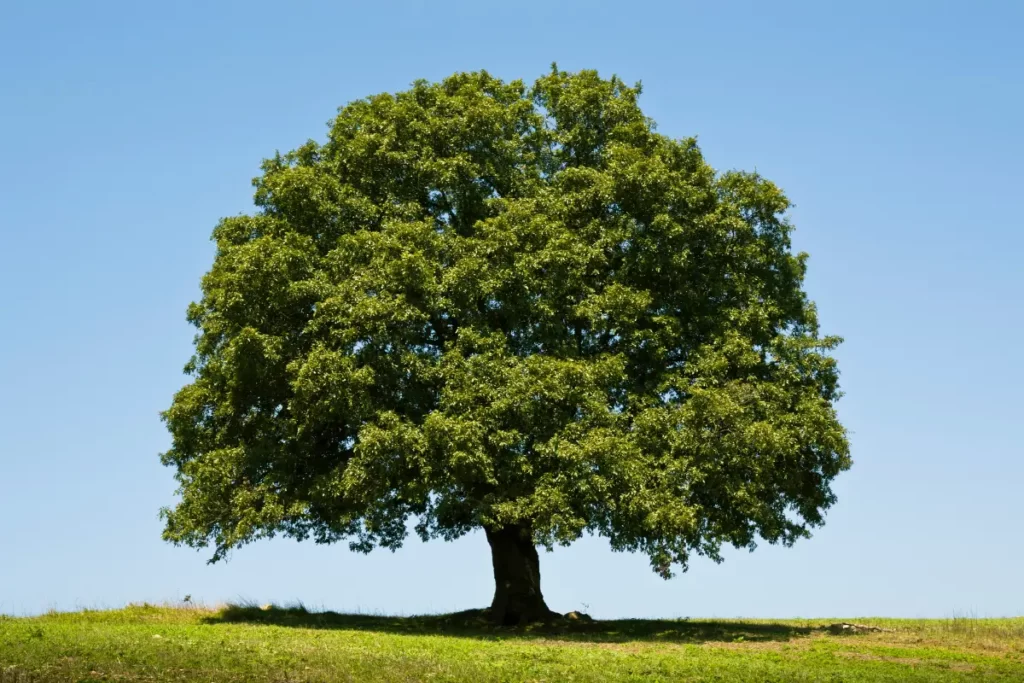
Oak trees attract the majority of the wasp species as they provide plenty of food supply. Wasps are predators, and many species eat insects living in the oak trees, making them a perfect hunting area for wasps. Furthermore, oak trees produce a lot of nectar, a favorite meal of many wasps.
Oak trees draw wasps because they provide an ideal nesting environment. The oak trees have a dense canopy of leaves and branches, making it easy for wasps to make their nest. Also, the outer layer of oak trees is rough, making it ideal for wasps to hold onto while building their nest.
The most perfect nesting factor makes it an ideal place for wasps to breed and grow larvae. The thick bark makes it impossible for predators to see the eggs hiding inside.
Pine Trees

Pine trees attract many different wasp species. However, the most common species living on them is Sirex Noctilio. This species can attack a wide variety of pine trees. Their most frequent target is vulnerable and weak trees.
They cause foliage to wilt and turn yellow. During oviposition, female wasps lay two eggs. It can be with or without mucous material and a symbiotic fungus for larvae to feed on. However, these fungi create harmful effects on the pine tree. Soon, wasps turn the tree into their colony.
They build their nest on the branches or either inside the hollow trunk. The thick bark keeps them hidden from predators.
Willow Trees
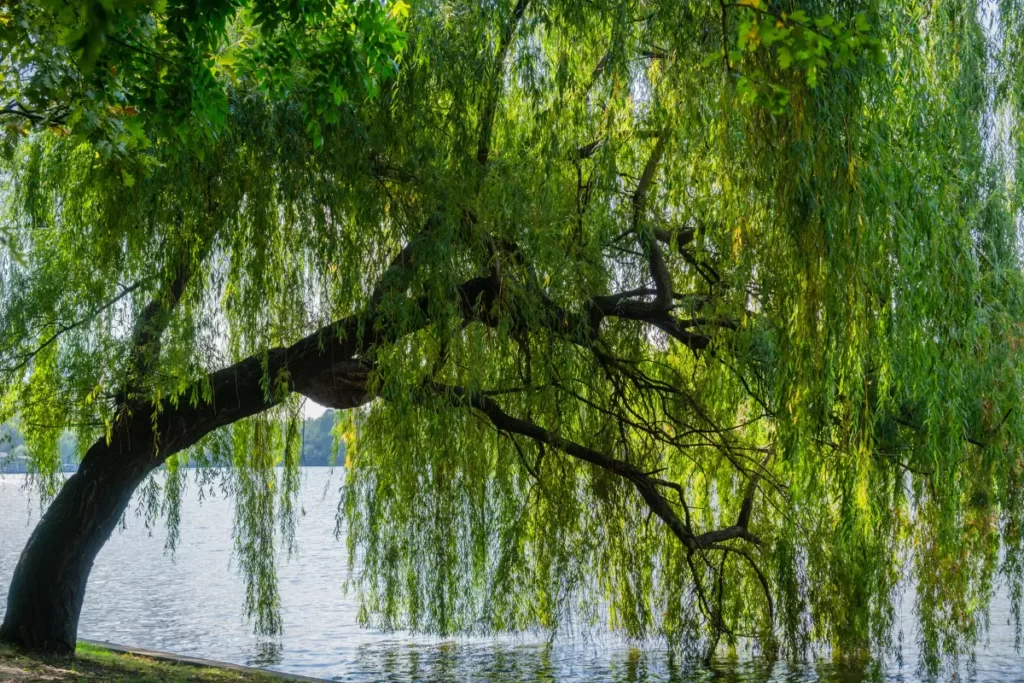
The high availability of food and the welcoming environment of willow trees attract wasps. Willow trees offer nectar-rich flowers, fruits, and sap, giving wasps a variety of food sources. The majority of adult wasp species can only suck liquid.
The sweet nectar is their principal form of nutrients, providing them energy. The wasp larvae feed on the insects living on the willow tree. The insect colonies on the tree bark will attract the wasps to make their nest on them.
Wasps also make nests on the branches or inside holes of tree trunks. The lush tree foliage shields the wasp’s colony from harsh weather and predators.
Types Of Wasps In Trees
As the season changes, you will notice a significant increase in bees and insects, including wasps. There are several species of wasps, and all of them are active during late spring and throughout the summer.
Some species are harmless, while others are potential hazards for humans and trees. There are thousands of species of wasps. I can’t cover it all. But features of the common one are in detail below. It will help you identify the type of wasps on your favorite tree.
Thread Waisted Wasp
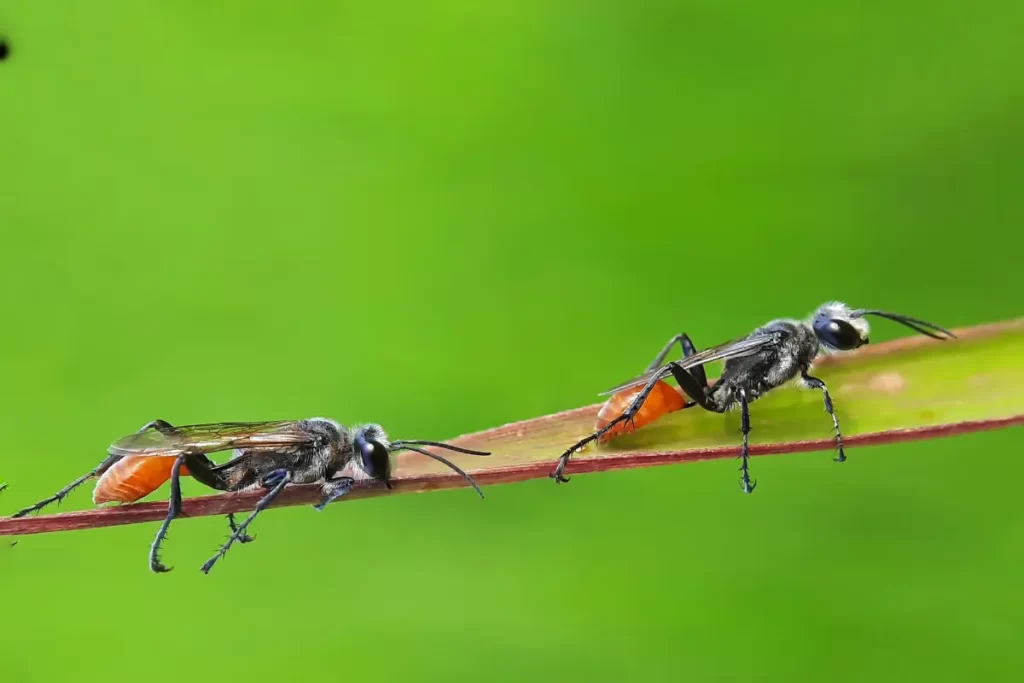
It is also known as Sand wasps. This wasp species is a solitary wasp. That means instead of living in a colony, only 10 to 12 live together. Thread-waisted Wasp live in soils or tree roots. They are about 2.5cm black with an orange or red bulging abdomen. And have acquired their name from thin waists.
Thread-waisted wasps have long and slender legs that they use to cling to the tree. Adult wasps take nutrition from the plant sap. While larvae are carnivorous and feed on spiders and small insects living on trees. Adult wasps attack and attach to the insects, paralyze them, and carry them for their young ones.
Great Black Wasps
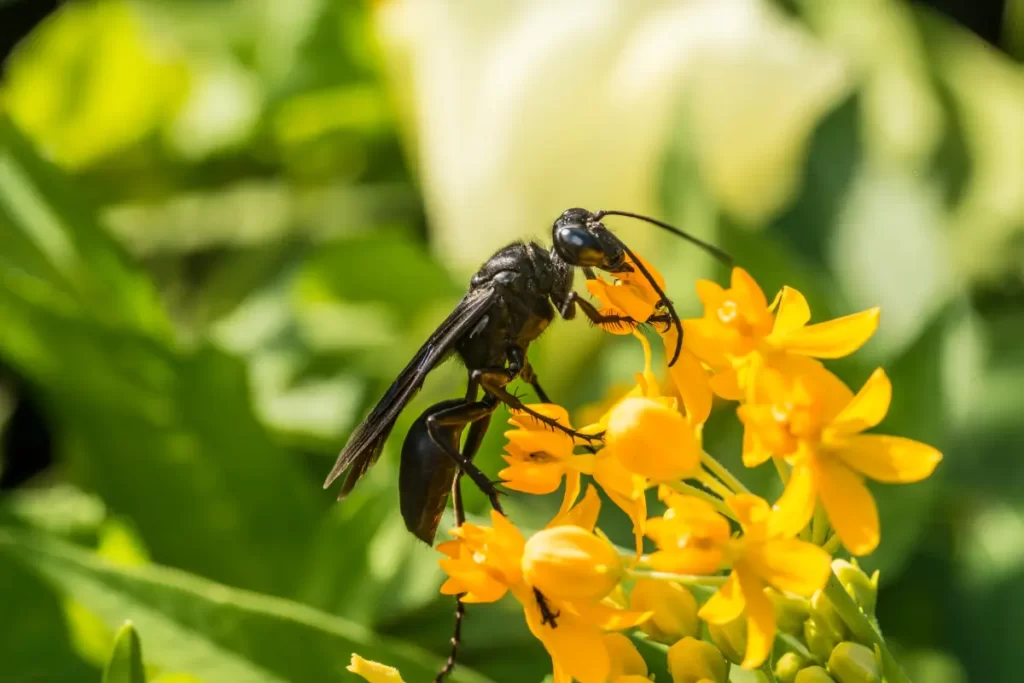
One of the most common plants and tree wasps are great black wasps, also known as Katydid Hunters. They are solitary wasps, which means they work alone without any worker or hive. As their name implies, Great black wasps are shiny black. They are huge and have a strong body.
Moreover, they are part of the extensive digger family and mostly live in burrows underground. Instead of nesting high above in trees, they burrow in the roots or sand near plants. The entrance to the nest is a small hole that serves as a gate for the burrow underground. Often, they place a small pebble to conceal it from predators. And unlike other wasp species, they pollinate while feeding.
European Hornet
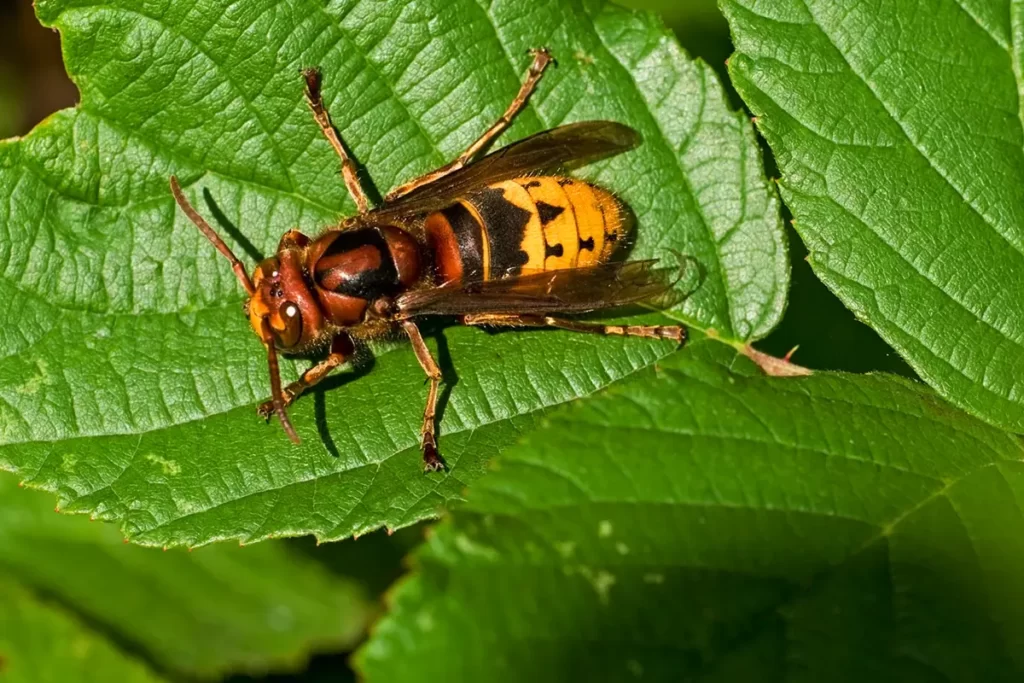
European Hornet wasps make a papery nest in hollow trees or overhanging on branches. They take their nutrients from cell sap, fruit, and honeydew. Their colony can include as many as 400 wasps. These wasps are enormous bees with blackheads and red patterns.
They also have traditional black and yellow stripes on their abdomen. While European hornet wasps may appear frightening, they are protective species that will not attack you unless provoked.
You can identify them by their robust size, which ranges from three-quarters to an inch. Some can be even an inch longer. Their overall color is brown or reddish brown.
Blue Winged Wasps
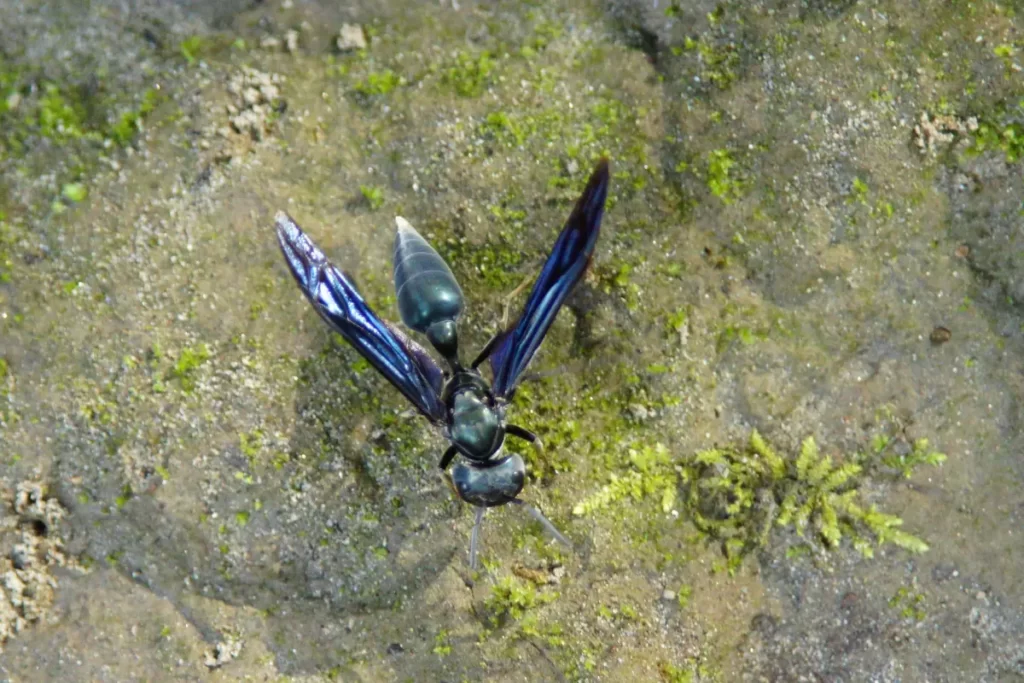
Blue-winged wasps are solitary wasps that live in gardens and yards. As the name implies, they have metallic blue wings even though these wings are barely visible. Instead, you can identify them by their orange abdomen and lower body. And they have a bright yellow patch near their waist.
The overall color of these wasps can range from black to dark blue. They build mud nests under tree roots or high above in branches. Adults feed on sweet nectar from flowers, while larvae eat spiders and small insects. Often, they fill their nests with paralyzed spiders for their offspring.
They are helpful for your garden because they help manage the number of spiders and Japanese beetles. If you come across their nest, leave them alone as long as they are not disturbing you cause they contribute to natural pest management.
Southern Yellow Jacket Wasps
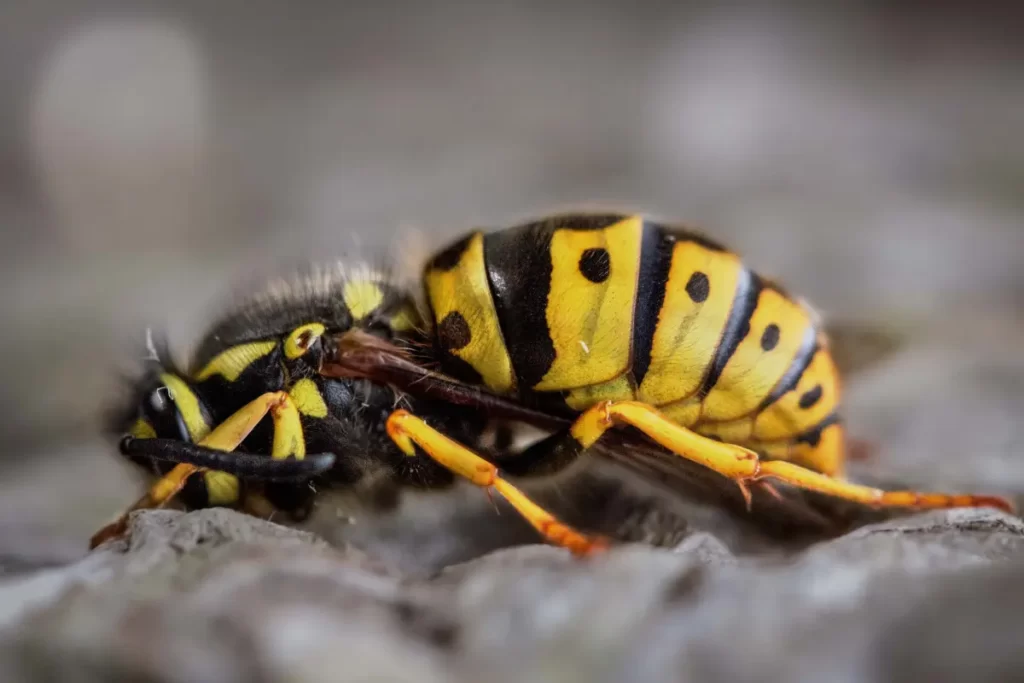
Southern yellow jacket wasps are common inside yards and gardens. They are similar to yellow jacket wasps but are particular in southern areas. However, these wasps are extremely dangerous to humans and other yellow jacket species.
When a southern yellow jacket makes a home, it will fiercely defend it. So, be careful when you decide to remove their nest. You can identify the Southern yellow jacket wasps by black and yellow stripes on their abdomen.
Similar to other yellow jackets. But they are half an inch or more longer than other yellow jacket wasps. They also have spade-like stingers, which they use for sucking nectar and killing insects. You can find a southern yellow jacket’s nest under hollow tree trunks or tree roots.
Types Of Wasp Nests In Trees
Wasps are social insects. They live in colonies and firmly believe in the protection of their queen. Usually, the queen wasp builds a nest, or several queen wasps get together to make an entire colony.
So, you might spot two or more nests on one tree limb. They build nests to provide a safe space for their young ones to grow. Each wasp species has its own unique feature of building a nest. There are almost thirty thousand wasps in each species.
Some have a similar way of constructing a nest, while other differs. Below, I have mentioned the most common wasp nest you might spot on the tree in your yard or garden.
Paper Wasp Nest
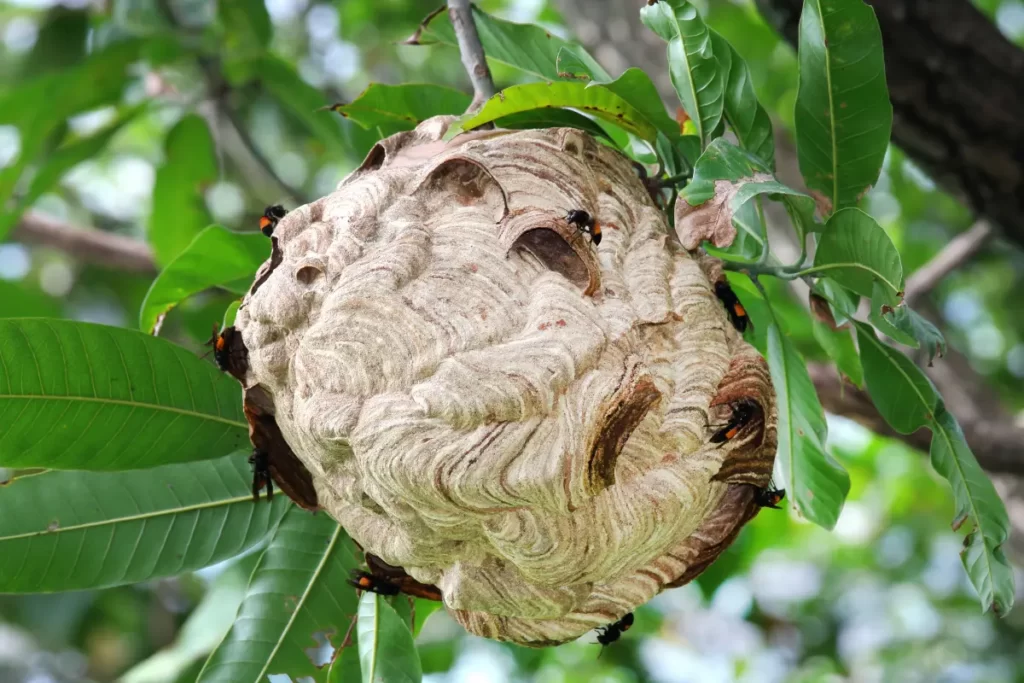
Paper wasps have astounding abilities to make nests. They collect fibers from dead wood and plant stems and combine them with saliva to make brown or gray papery nests. Because of their unique ability, people also call them umbrella wasps.
They usually make their nest high up in the tree branches, hidden in foliage. Their one nest can house almost 100 wasps, and you can find more than two nests on one tree limb. You can efficiently identify paper wasps from bees or yellow jackets. They are brown with yellow-reddish marks on them. Paper wasps feed on insects and cell saps from the tree.
Potter Wasps Nest

Potter wasps are solitary wasps distinguished by their distinctive nest-building behavior. They construct their nest from clay or mud. So, nests end up looking like little pottery jars.
They attach nests to limbs on trees, including twigs and leaves. The female potter wasps first collect water and mix it with dry soil using their mandibles. Then, carry the mud mixture to the nest-making site.
And transform it into individual small pots. Each nest can range from half an inch to seven inches. This nest usually takes several hours to make. Once the nest is ready, potter wasps lay eggs and hunt food for larvae. They paralyze several caterpillars and take them back to the nest for larvae to feed. They are not threatening to humans or trees.
Mud Dauber Nest
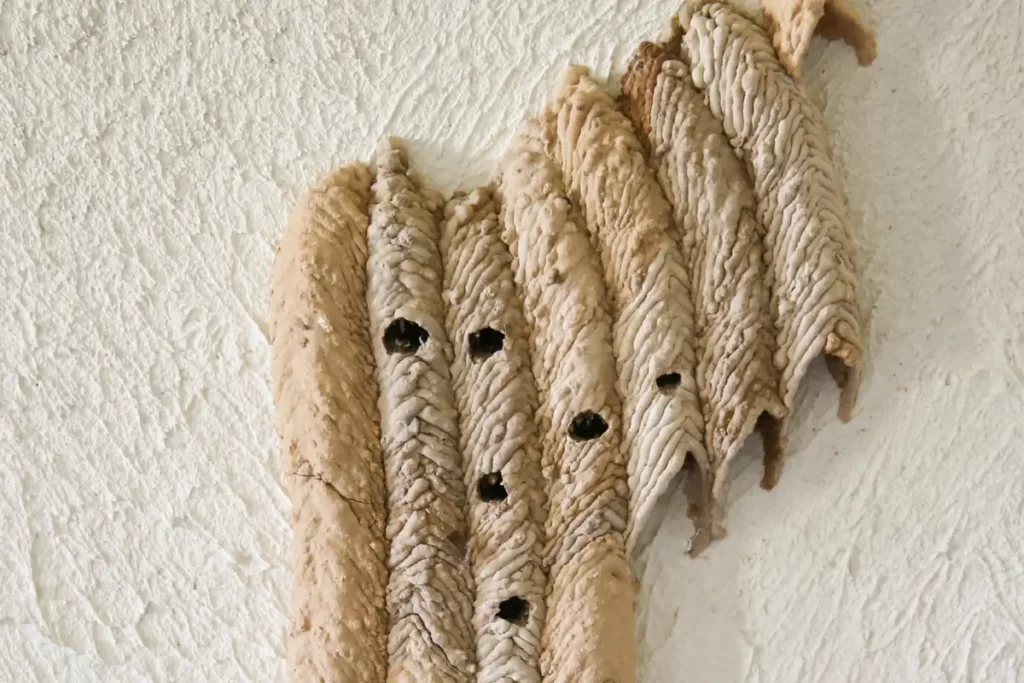
As the name indicates, Mud Dauber wasps build their nests from mud. They typically make nests on flat wood surfaces like tree trunks. The female Mud Dauber chooses a safe location near a potential mud source to begin nest construction.
Usually, she checks out two or three sites to collect good-quality mud for the nest. The wasps scrape the soft sand with a mandible and curl it into a small ball. She puts the mud ball in position and then smooths it into small tubes with saliva.
A single mud tube contains numerous sealed chambers which hold mud dauber larvae. The wasp nest is made of many mud tubes and can be as long as 8 inches.
Spider Wasps Nest
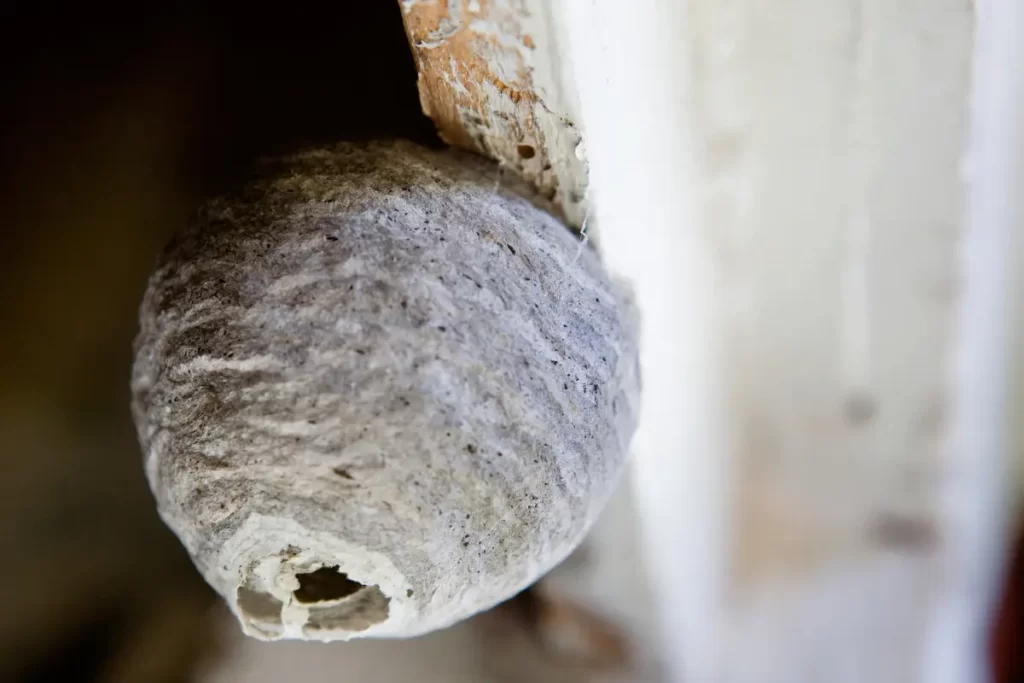
Spider wasps are solitary wasps that live in gardens, particularly in regions with a high spider population. They are medium-sized wasps with long legs and slim bodies. The name of this species is an obvious indicator that they attack spiders and use their venom to paralyze them.
You can distinguish spider wasps with black bodies and bright reddish-orange legs. They typically live in mud nests abandoned by Mud Dauber wasps. However, spider wasps transfer spiders in their nest before laying eggs to provide food for larvae when they hatch. Also, they use twigs or dried wood in the nest to divide compartments for each egg.
Why Are There So Many Wasps In Trees But No Nests?
Trees in front of your house can be wasp magnets for multiple reasons. The most obvious reason is the ample supply of food. It does not necessarily indicate that there is a wasp nest nearby.
Usually, wasps are near trees to find the sweet cell sap and honeydew from leaves. Even the insects living on the tree might attract several wasp species. Swarms of paper wasps outside your home also indicate the mating behavior.
The male wasps congregate in higher areas, like trees, to attract the female wasps. Not only do they gather around high-rise trees, but you can also find them hanging around towers and other tall structures. These swarms of wasps are particularly abundant during the autumn months just before the start of winter.
How To Get Rid Of Wasps When There Is No Nest In The Tree?
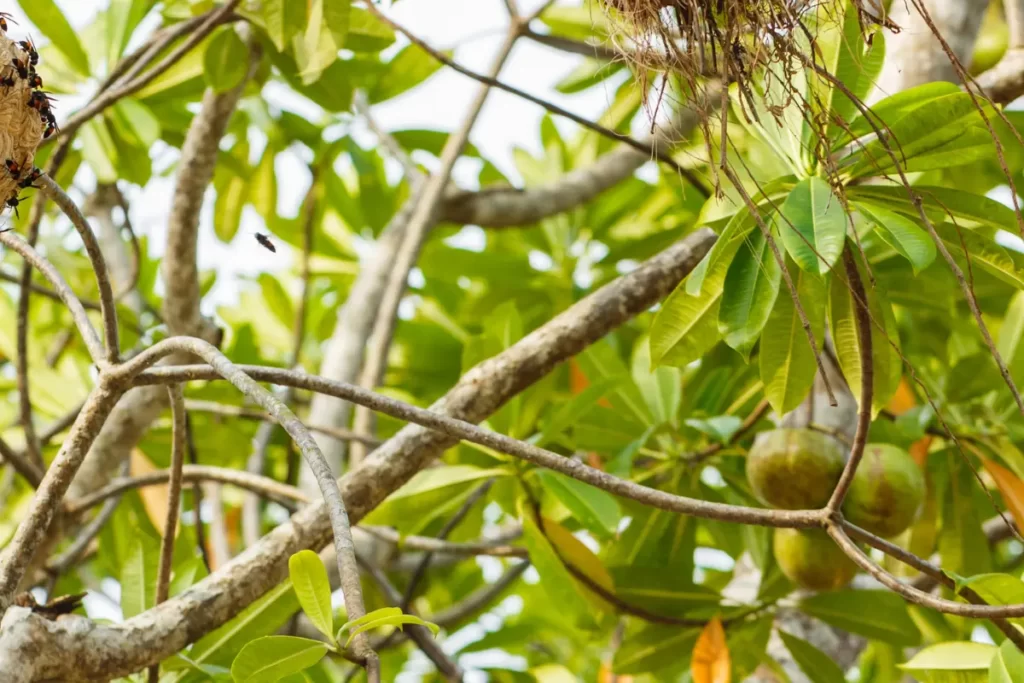
Wasps search for nearby food supply, shelter, and protection from predators. Although wasp nests are common on trees, they might build them nearby instead of building their nest on trees. So, you might spot swarms of wasps near trees but no nest.
They typically linger around trees during the day in search of food. Adult wasps feed on the sweet sap and nectar. They also hunt down the small insects living on trees for their larvae. So, flowers and insects are their main attraction on the trees. Below are a few tips that will help you keep wasps away from the trees.
Wasps Traps
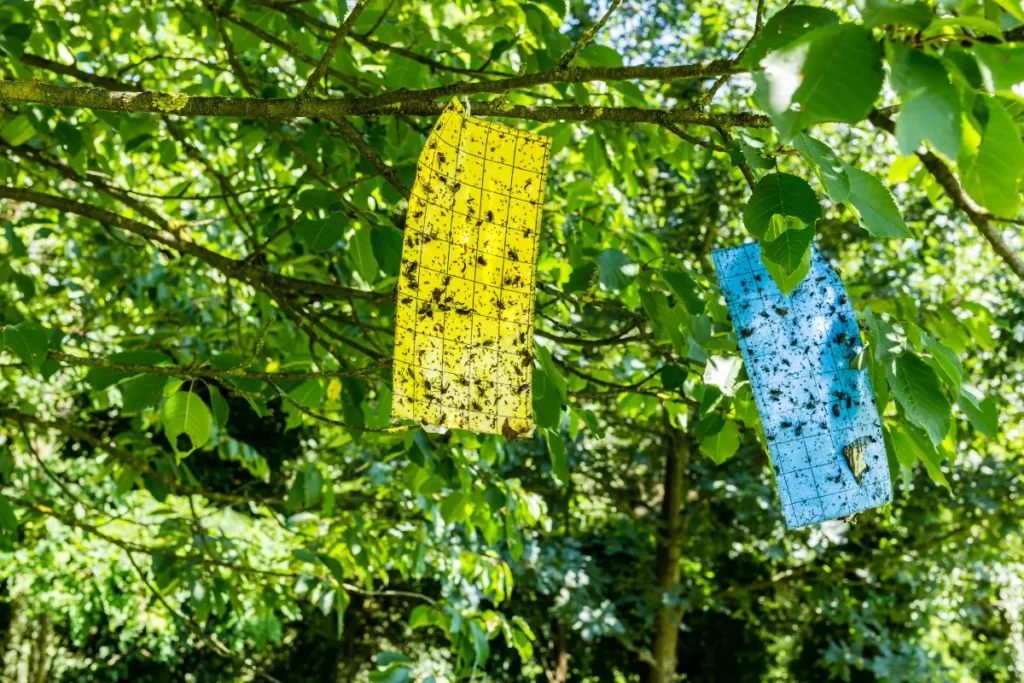
Wasps traps are a popular and practical approach to removing wasps from your garden or yard. The traps contain sweet liquid, which lures wasps. When wasps crawl onto the trap, they fall into it and drown.
Although wasp traps are effective, they collect numerous dead wasps, which is unattractive. Replace the traps more frequently and keep them away from outdoor living spaces. Hang these traps at night on trees full of fruits and flowers. You can also make the wasp traps using the products available at home.
Take a 2-liter soda bottle and cut it in half. Punch two holes on either side and attach a string. Add half a cup of water and ¾ cup of vinegar, and add anything sweet.
Wasps Repellent
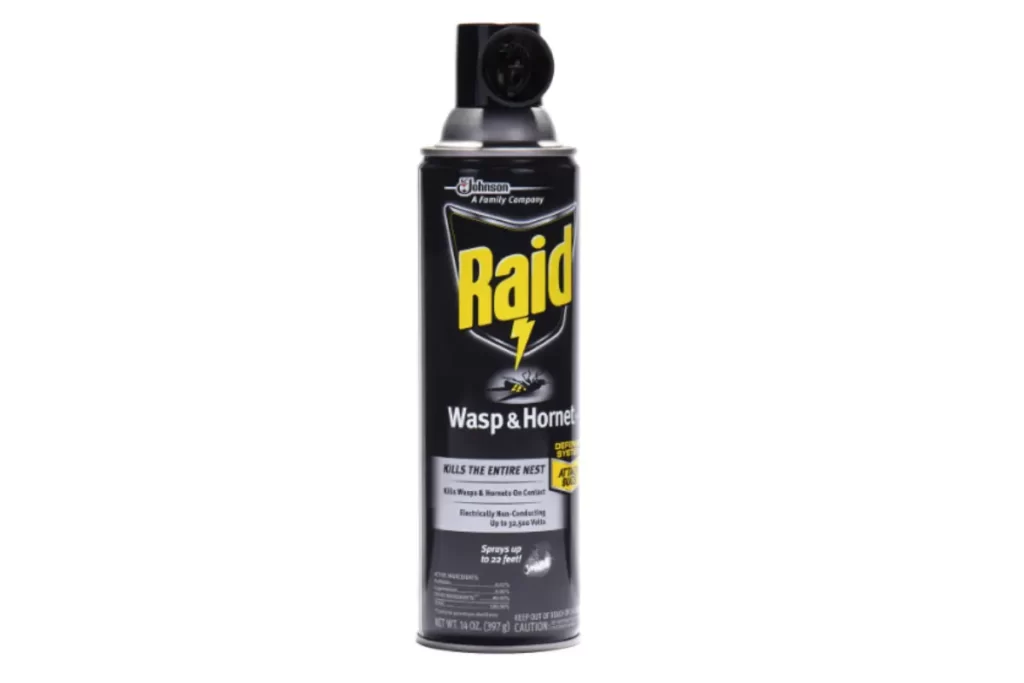
Wasps repellent comes in a variety of formulations, including sprays and aerosols. These solutions will help reduce the wasps in your yard or near trees. Some of these solutions kill wasps on contact.
And other types of solutions do not kill the wasps but keep them away. Citronella oil is also an infamous wasps repellent derived from lemon grass. It also acts as a natural wasps repellent. Take a spray bottle and pour one cup of water.
Then, add a few drops of citronella oil and shake the solution. Spray this near your plants and trees to keep buzzing bees away. You can replace citronella oil with other essential oils like lemon eucalyptus and peppermint oil.
Soap And Detergent Mixture

Farmers have been using this mixture to help manage pests like insects and wasps. It is an easy method to save money on pesticides. You can make it by combining dish soap and liquid hand soap.
Some even substitute laundry detergent for hand soap because it includes more chemicals than conventional hand soap. It does not kill the wasps immediately. The process will take time. But it is the most effective way.
Spray the solution on tree leaves, flowers, and tree trunks where wasps are common. While sucking the cell sap or honeydew, wasps will also take in the detergent and might die a painful death.
Avoid Leaving Nights On
Wasps are attracted to bright lights. They carry out all their activities, including food search and nest construction, during the day when the sun is out. Their peak working hours are in the afternoon.
Although they are more active during the day, you can still spot a few at night. Leaving your lights open all night means wasps get more time to work and stay around. Hungry wasps might come around places with bright lights in food search. Therefore, keep the light close at night, especially the ones that are near trees in yards.
If you like to decorate your trees with fairy lights on special occasions, I will advise you against leaving them on all night. Not only does it attract insects and buzzing bees, but it might be a lot for your electric charges.
Growing Garlic
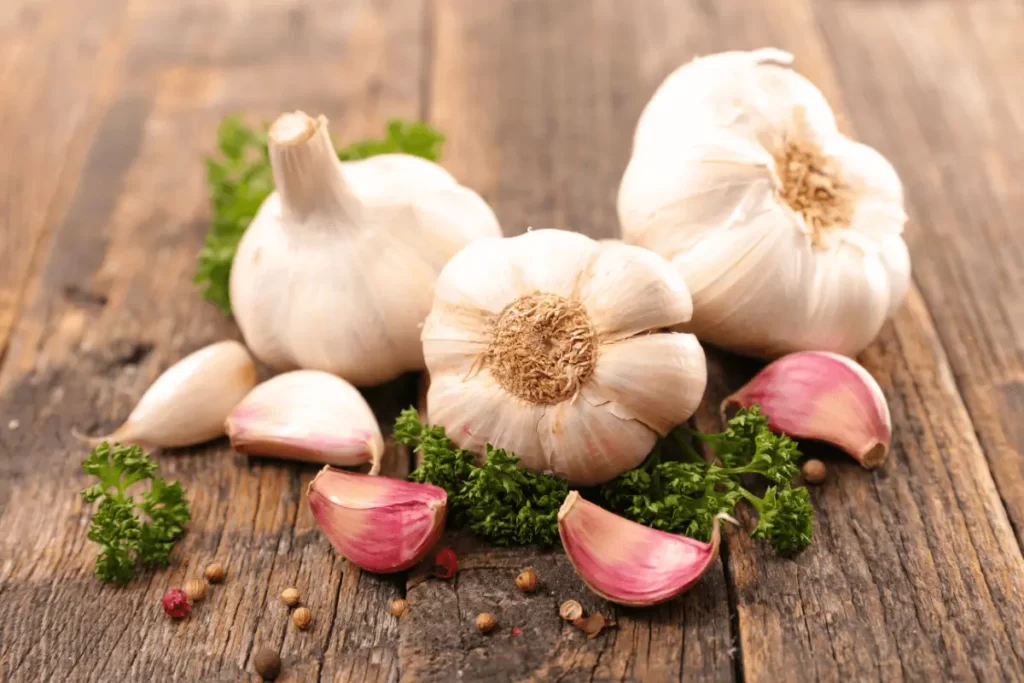
Wasps loathe the smell of garlic. Growing a garlic plant in your yard will keep the wasps away from all the nearby trees and plants. If you have a huge garden and can spot wasps frequently although there are no nests near it, try placing garlic plants nearby. Within a few days, you will notice a big difference.
Another way of using garlic to deter the wasps is by making a garlic solution. Take garlic and chop it well. Take a spray bottle. Add half a cup of water and chopped garlic. Mix it vigorously.
Avoid using garlic powder cause it will not give the same results. Spray this solution on the trees and nearby structures. The heavy garlic odor will keep many pests away. The best time to use this is during the day.
What Are The Advantages Of Wasp Nests In Garden Trees
We cannot argue on the fact that wasps are pests or not. But I can tell you without a doubt, they do serve some purpose while living their annoying life in your garden. Hence, even if you hate wasps for hanging out around your tree, remember they do serve some small purpose.
Number one, they help in pollination, making your garden appear beautiful. Secondly, they get rid of small, harmful insects from the trees. I have discussed both in detail below.
Pollinators
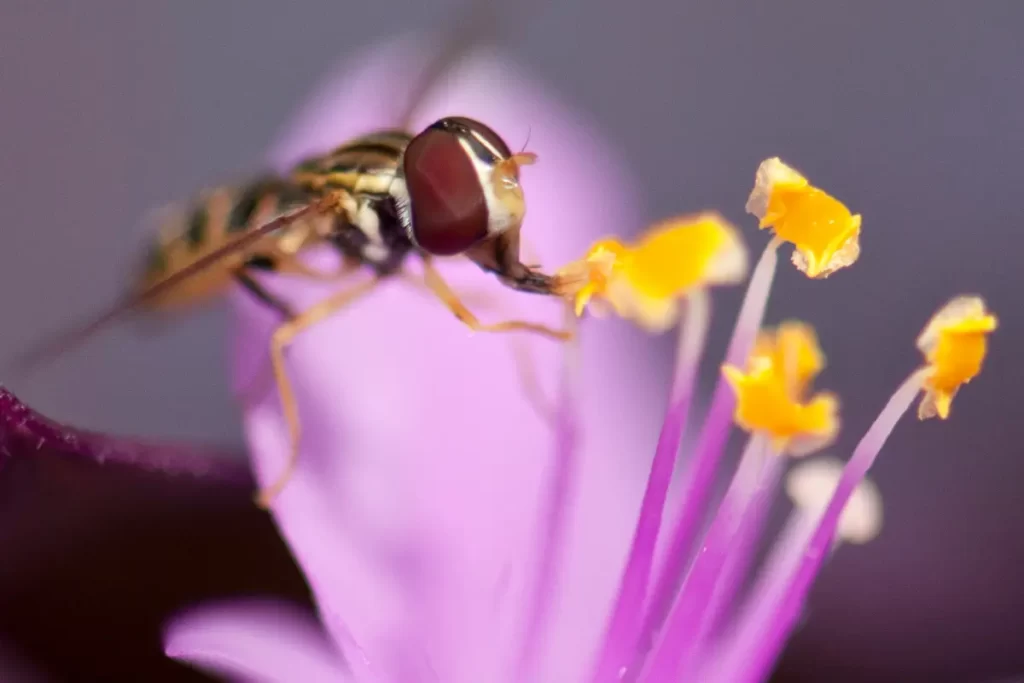
Even though we hate wasps in yards and gardens, they still are a crucial part of the pollinator community. Insects and bees are appreciated a lot for their one job of feeding their young ones. Most insect species feed their young pollen.
Hence, when collecting pollen for their own benefit, they transfer them from one flower to another. And often from one plant to another. Although wasps do not feed their young pollen, they still play a vital role.
Adult wasps take nutrients by sucking cell sap and honeydew from flowers, fruits, and leaves. So, they search for nectar for their own energy. Hence, unknowingly, wasps transfer pollen from one flower to another.
Pest Control
An uncommon fact about wasps is that they are the best natural pest controllers. Although we hate them hanging around in the yard, they are doing us a favor by killing all the insects and parasites harming trees.
So, when wasps are not busy constructing a nest or stinging humans, they are actually doing a great job. Numerous wasp species are natural predators of many small insects that live on trees or crops.
Wasps collect all these unwanted insects from trees, which they take to their nest. Unlike the adults, wasp larvae have mouths to eat solid food. They also require protein in large amounts to grow. So, small insects serve as an ideal food for larvae to feed on.
What Are Dangers Of Wasp Nests In Garden Trees
Wasp nests are one of the worst nightmares in a yard. You might get a sting if you approach the wasp nest too closely. Wasps can get extremely upset when startled and begin to flow out of their nest.
For 15 minutes, they will hang out outside in search of an intruder before returning to the nest. The actual danger arises when wasps are disturbed first. It is equivalent to removing a pin from a grenade. Wasps’ nests are ready to use everything they have on the threat. Even if you accidentally kicked a ball on a wasp nest.
The wasps will swarm out and begin to search for settlement from the attacker. When the person reaches within 6 feet of the wasp nest, they will resurface and attack. Hence, it is dangerous to have a nest around. Also, the wasp sting can be fatal.
How To Get Rid Of Wasps Nest In Trees?
One of the most important aspects of maintaining lush and healthy trees in your yard is to keep out all the insects and bees that can make their habitat on your trees. Wasps usually make their nest on tall trees.
It’s essential to know the signs and structures of wasps’ nests before you decide to remove them. Also, wasps are aggressive insects. Never SWAT them. They will attack you in no time when threatened.
Therefore, it is essential to prepare yourself before you plan a heist on a wasp nest. Given below are a few tips to help you out in throwing away the nest from your tree.
Safety Precautions

Before you begin your mission of sweeping out wasps, have a well-thought-out plan and strategy. Also, carefully plan out the escape route. Wasp attack is nastier than you can think. Execute this plan at night, when wasps are resting and less active.
It might take them a little time to figure out what is happening, and during that time, you need to get it there as fast as you can. Even though you have a plan for everything, you should still wear protective clothing that covers your arms, legs, feet, and face.
Ensure that no single part of your body is open. Furthermore, avoid using bright lights like flashlights, as this will alert wasps before you even approach them. Instead, use a red light.
Bagging The nest
I don’t recommend you try to eliminate wasp nests by yourself without any help. But if you are sure you can, one of the simplest methods is to use a garbage bag. I would suggest doing this at night.
Approach the nest slowly and avoid sudden movements that may provoke the wasps. Cover the nest with the bin liner. Then, detach the nest carefully from the branch it is attached to. Seal the bag immediately to prevent wasps from escaping. Place the bag in a bin with a tightly shut lid.
Preferably far away from your home. If possible, keep a few pest control sprays on hand. To spray around if any wasp sneaks out. Avoid spraying it directly on a wasp nest as it will make your job more difficult.
Using A Vacuum Cleaner

It is a difficult task to remove a wasp nest. So, it is essential to have all the right tools. Vacuum is a chemical-free way to remove wasp nests. Wear a respirator, as there will be dust and debris flying all over when you use a vacuum.
Connect the hose extension to your vacuum cleaner and attach the crevice tool to the other end of the hose. It will allow you to reach the wasp nest without getting close to it. Place the crevice tool near the wasp nest and start the vacuum.
Carefully suck the wasp nest into the vacuum. Ensure to move the vacuum around to suck in all the nests and wasps around it. Turn off the vacuum. Remove the bag and or bin. Seal it tightly and throw it away in a tightly closed bin. Outside and away from home. After removing the nest, spray pesticides.
Use Insecticide

Wait till nighttime before you approach a wasp nest. Protect yourself first. Use a foaming spray insecticide, as it gives much better results. The foaming spray traps the wasps within their nest, making your work ten times less than it would have been with a regular insecticide.
You can also raise the foaming spray 20 feet above the ground. Avoid using it on a windy day, and you should never stay directly under the nest in case it might fall. Instead, use a ladder. And place it at a great distance from the nest where it is easily visible. After spraying, leave the nest alone for 24 hours.
Then, come back the next day to see the activity. If you see any visible wasps, repeat the process a second time. Once you are sure all wasps inside the nest are dead, throw away the best in a tightly sealed bin.
Can Wasps Destroy Your Garden?
Yes. Wasps can destroy your garden. They hang out in your garden for three main reasons: food, water, and shelter. After finding a suitable hidden spot, they make a nest. Wasps suck sweet nectar from the flowers and fruits.
Hence damaging and wilting your favorite plants. Also, it ruins an entire tree that is ripe with fruits. Wasps also need water, and in winter, when there is a water shortage, the swarms of wasps will attack stems and leaf stalk plants in search of hydration.
To make their nest, female wasps will find your outdoor furniture handy and can take wood and fiber from it, leaving cracks that destroy the complete look of your yard. It takes dedication and a lot of work to keep your garden alive and beautiful. It is unfortunate to see it getting destroyed by bugs.
Conclusion
Wasp nests are common in trees. Even when they do not have a nest on the tree, you might still spot them around. Wasps take their nutrition from trees.
Adult wasps sucks nectar, but larvae feed on small insects common in plants and trees. Therefore, wasps prefer to live on either tree or nearby. Trees also protect wasps from predators. So, you might spot a few wasps nests hanging high above.
Wasp nests in trees might be helpful as they help in pollination and are probably the best natural pesticides. But they also damage your yard in the process. Also, wasp stings can be deadly.

